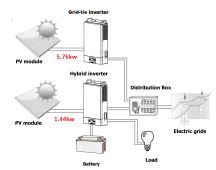Hello
I am a newbie and thinking about adding battery to my existing solar system.
When I bought a house, it had thirty solar panels and a grid tie inverter. What a deal!
I live near urban area and hardly experience power outage but how knows. I realized a grid tie inverter didn't work when the grid was off. I started to watch videos to know how other people are doing.
My small plan is
1) Keeping existing solar configuration
2) Adding a hybrid inverter and a battery pack for small loads except dryer, wall ovens or air conditioners.
To achieve this I would buy a unit of MPP LVX6048 and one 48V 100Ah LiFePO4 battery pack.
I have total 7.2kw solar panels with five PV strings running down to the basement. Each string gives around 290V and 5A.
As PV voltage is medium to high side, LV6548 is not the option. Out of 5 PV strings, one will be used for my small backup or critical load. For the rest of PVs will still do the same job. Average generation per string is approximately 5kwh a day, which is enough for charging one battery pack of 5kwh. When the grid is down, the hybrid inverter will draw power from the battery to feed0 the critical load.
I am not sure if this is a feasible way. Any advice will be greatly appreciated.

I am a newbie and thinking about adding battery to my existing solar system.
When I bought a house, it had thirty solar panels and a grid tie inverter. What a deal!
I live near urban area and hardly experience power outage but how knows. I realized a grid tie inverter didn't work when the grid was off. I started to watch videos to know how other people are doing.
My small plan is
1) Keeping existing solar configuration
2) Adding a hybrid inverter and a battery pack for small loads except dryer, wall ovens or air conditioners.
To achieve this I would buy a unit of MPP LVX6048 and one 48V 100Ah LiFePO4 battery pack.
I have total 7.2kw solar panels with five PV strings running down to the basement. Each string gives around 290V and 5A.
As PV voltage is medium to high side, LV6548 is not the option. Out of 5 PV strings, one will be used for my small backup or critical load. For the rest of PVs will still do the same job. Average generation per string is approximately 5kwh a day, which is enough for charging one battery pack of 5kwh. When the grid is down, the hybrid inverter will draw power from the battery to feed0 the critical load.
I am not sure if this is a feasible way. Any advice will be greatly appreciated.



